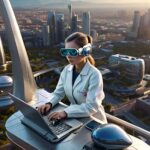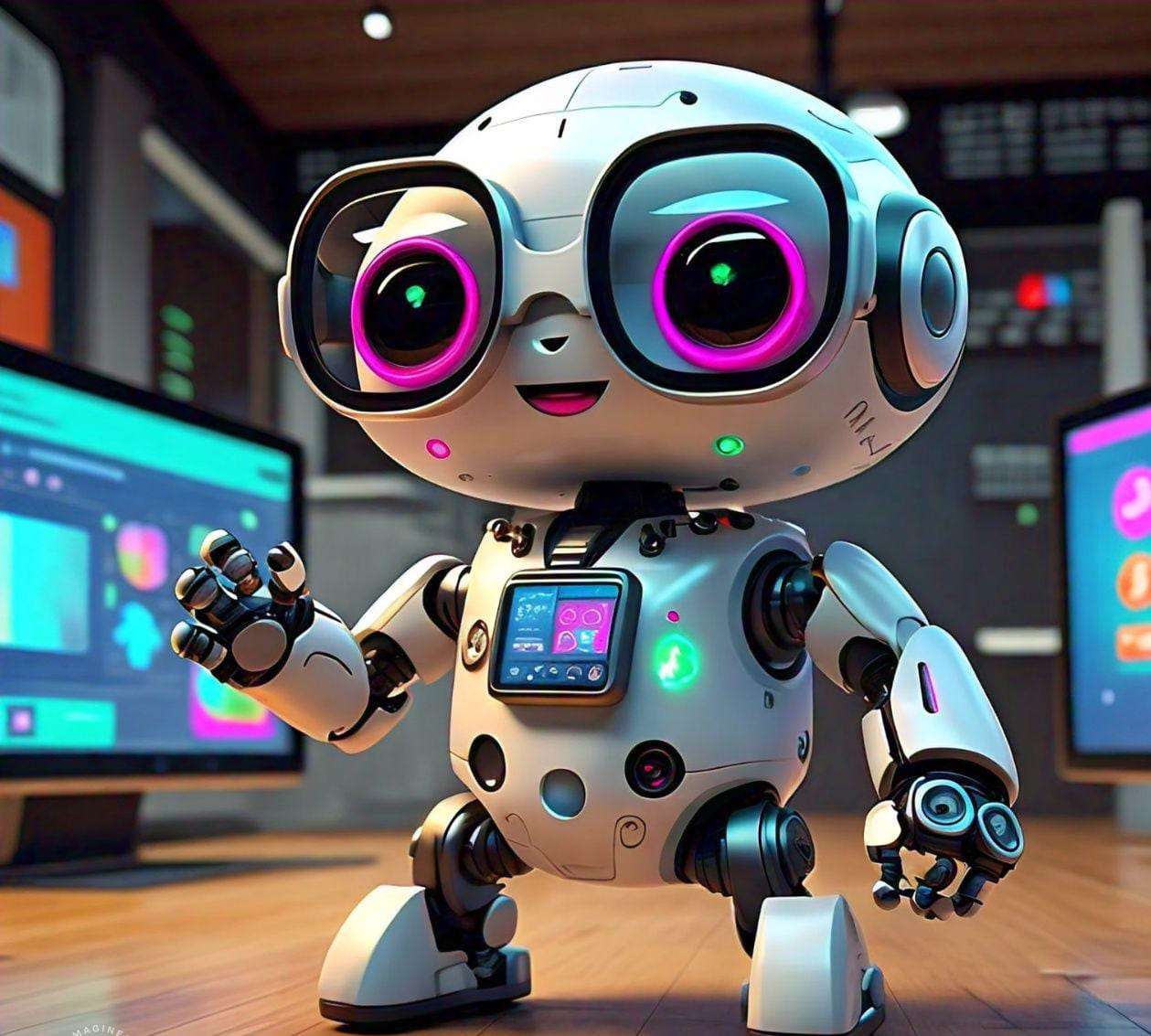Utilizing Augmented Reality in Applications
Outline:
- Introduction
- Definition of Augmented Reality (AR)
- Brief History of AR
- Importance of AR in Today’s World
- Applications in Education
- Enhancing Learning Experiences
- Virtual Classrooms and Training
- Interactive Educational Content
- Applications in Healthcare
- Medical Training and Education
- Surgery Assistance
- Patient Care and Therapy
- Applications in Retail
- Virtual Try-Ons
- In-Store Navigation
- Personalized Shopping Experiences
- Applications in Entertainment
- Gaming
- Live Events and Performances
- Interactive Media and Storytelling
- Applications in Real Estate
- Virtual Property Tours
- Interactive Home Design
- Enhancing Property Marketing
- Applications in Tourism
- Augmented Tourist Guides
- Interactive Maps and Navigation
- Historical Site Reconstructions
- Applications in Manufacturing
- Training and Simulation
- Maintenance and Repair
- Design and Prototyping
- Applications in Military
- Training Simulations
- Battlefield Visualization
- Equipment Maintenance
- Applications in Automotive Industry
- Driver Assistance Systems
- Virtual Car Showrooms
- Enhanced Navigation Systems
- Applications in Advertising and Marketing
- Interactive Advertisements
- Product Visualization
- Customer Engagement
- Applications in Architecture and Construction
- Design Visualization
- Project Management
- Safety Training
- Applications in Art and Culture
- Virtual Museums and Galleries
- Interactive Exhibits
- Cultural Preservation
- Future Potential of AR
- Emerging Trends
- Innovations on the Horizon
- Challenges and Opportunities
- Conclusion
- Recap of AR Applications
- The Transformative Impact of AR
- Final Thoughts
Utilizing Augmented Reality in Applications
Introduction
A technology known as augmented reality (AR) overlays digital data, including texts, sounds, and images, over the physical environment. It’s like wearing a pair of glasses that allows you to see an extra layer of information on top of what you already see. This technology, which once seemed like science fiction, is now becoming an integral part of various industries.
Applications in Education
Enhancing Learning Experiences
Imagine learning about the solar system by seeing planets orbit around you in your living room. AR makes this possible, turning learning into an engaging, interactive experience. It allows students to visualize complex concepts in a way that traditional textbooks cannot.
Virtual Classrooms and Training
With AR, virtual classrooms can simulate real-world environments, providing hands-on training without the need for physical resources. This is especially beneficial in fields like engineering and medicine, where practical experience is crucial.
Interactive Educational Content
Interactive AR apps enable students to explore subjects in depth. For example, a biology student can dissect a virtual frog or explore the human anatomy in 3D, making learning more immersive and comprehensive.
Applications in Healthcare
Medical Training and Education
AR is revolutionizing medical training by providing interactive 3D models of the human body. Medical students can practice surgeries and learn anatomy using AR simulations, enhancing their skills without the risk associated with real-life procedures.
Surgery Assistance
During surgeries, AR can overlay important information, such as patient vitals and anatomical guides, onto the surgeon’s field of view. This assists in precision and improves outcomes by providing real-time data without the need to look away from the patient.
Patient Care and Therapy
For patients, AR can provide therapeutic experiences. For instance, AR games are used in physical therapy to motivate patients to perform exercises, making recovery more engaging and effective.
Applications in Retail
Virtual Try-Ons
Gone are the days of guessing how a piece of clothing or makeup will look on you. AR allows customers to virtually try on products, providing a better shopping experience and reducing returns.
In-Store Navigation
AR can guide customers through stores, helping them find products quickly and efficiently. This enhances the shopping experience and saves time.
Personalized Shopping Experiences
Retailers can use AR to create personalized shopping experiences. By analyzing customer preferences and behaviors, AR can recommend products and offer promotions tailored to individual shoppers.
Applications in Entertainment
Gaming
AR has taken gaming to the next level by blending virtual elements with the real world. AR has the ability to provide immersive and participatory gaming experiences, as seen by games like Pokémon Go.
Live Events and Performances
At live events, AR can enhance the experience by adding virtual elements to performances. Imagine a concert where the stage comes to life with animated characters and visual effects.
Interactive Media and Storytelling
AR is being used to create interactive books and media, where readers can see characters come to life and interact with the story, making reading a more engaging experience.
Applications in Real Estate
Virtual Property Tours
AR allows potential buyers to take virtual tours of properties from the comfort of their homes. In addition to saving time, this facilitates the process of making wise selections.
Interactive Home Design
Homeowners can use AR to visualize home improvements and interior designs before making any changes. This helps in planning and ensuring satisfaction with the final outcome.
Enhancing Property Marketing
Real estate agents can use AR to create engaging marketing materials that showcase properties in an innovative way, attracting more potential buyers.
Applications in Tourism
Augmented Tourist Guides
AR can provide tourists with interactive guides that offer information about landmarks and attractions in real-time, enhancing the travel experience.
Interactive Maps and Navigation
AR-powered maps can guide tourists through cities, highlighting points of interest and providing directions, making navigation easier and more enjoyable.
Historical Site Reconstructions
AR can bring history to life by reconstructing historical sites and events. Tourists can see how places looked in the past, providing a deeper understanding and appreciation of history.
Applications in Manufacturing
Training and Simulation
In manufacturing, AR is used for training workers by simulating real-world scenarios. This helps in skill development and ensures workers are well-prepared for their roles.
Maintenance and Repair
AR can assist technicians in repairing and maintaining equipment by overlaying step-by-step instructions and diagrams onto the machinery, improving efficiency and accuracy.
Design and Prototyping
Manufacturers can use AR to visualize and modify designs before creating physical prototypes. This lowers expenses and expedites the development process.
Applications in Military
Training Simulations
AR is used in military training to create realistic simulations of combat scenarios. This provides soldiers with practical experience in a safe environment.
Battlefield Visualization
In the field, AR can provide soldiers with critical information, such as enemy positions and terrain data, directly in their line of sight, enhancing situational awareness.
Equipment Maintenance
AR assists in the maintenance of military equipment by providing detailed instructions and real-time data, ensuring that equipment is in optimal condition.
Applications in Automotive Industry
Driver Assistance Systems
AR enhances driver assistance systems by overlaying navigation information, hazard alerts, and other data onto the windshield, improving safety and convenience.
Virtual Car Showrooms
Potential buyers can use AR to explore and customize vehicles virtually, providing a comprehensive understanding of the car before making a purchase.
Enhanced Navigation Systems
AR-based navigation systems provide real-time directions and traffic information, making driving more efficient and less stressful.
Applications in Advertising and Marketing
Interactive Advertisements
AR allows for the creation of interactive advertisements that engage consumers in a unique way, increasing brand awareness and recall.
Product Visualization
Customers can use AR to visualize products in their environment before making a purchase, reducing uncertainty and increasing confidence in their choices.
Customer Engagement
Brands can use AR to create memorable experiences that engage customers and build loyalty. For example, AR games and experiences can be used in marketing campaigns to attract attention and encourage participation.
Applications in Architecture and Construction
Design Visualization
Architects can use AR to visualize designs in 3D, allowing clients to see and interact with the design before construction begins, ensuring alignment with their vision.
Project Management
AR can assist in project management by overlaying project plans and timelines onto the construction site, improving coordination and efficiency.
Safety Training
Construction workers can use AR for safety training, simulating dangerous scenarios and teaching proper safety protocols in a controlled environment.
Applications in Art and Culture
Virtual Museums and Galleries
AR enables virtual tours of museums and galleries, making art and culture accessible to a wider audience and providing interactive experiences.
Interactive Exhibits
Museums can use AR to create interactive exhibits that engage visitors and provide additional information about the displays, enhancing the educational experience.
Cultural Preservation
AR can be used to preserve and share cultural heritage by recreating historical sites and artifacts, ensuring that they are accessible to future generations.
Future Potential of AR
Emerging Trends
AR technology is continuously evolving, with new applications and improvements emerging regularly. Trends such as AR cloud, 5G integration, and wearable AR devices are set to transform how we interact with the world.
Innovations on the Horizon
Future innovations in AR include more realistic and immersive experiences, improved hardware, and expanded use cases in various industries, making AR an even more integral part of our daily lives.
Challenges and Opportunities
While AR offers numerous benefits, it also presents challenges such as privacy concerns, technological limitations, and the need for robust infrastructure. Addressing these challenges will be crucial for the widespread adoption of AR.
Conclusion
From education to healthcare, retail to real estate, and beyond, AR is transforming how we interact with the world. Its ability to overlay digital information onto our physical surroundings opens up endless possibilities for innovation and improvement across various fields. As AR technology continues to evolve, its applications will expand, further enhancing our lives and experiences.
FAQs
First question: What distinguishes AR from VR? A1: AR overlays digital content onto the real world, while VR creates a fully immersive digital environment separate from the real world.
Q2: How is AR used in healthcare? A2: AR is used for medical training, surgery assistance, patient care, and therapy, providing interactive and real-time information to enhance medical practices.
Q3: Can AR be used in small businesses? A3: Yes, AR can benefit small businesses in various ways, such as enhancing marketing efforts, improving customer experiences, and streamlining operations.
Q4: What are the future trends in AR technology? A4: Future trends include AR cloud, 5G integration, wearable AR devices, and more realistic and immersive experiences.
Q5: Are there any privacy concerns with AR? A5: Yes, privacy concerns include data collection, user tracking, and the potential misuse of personal information. Addressing these concerns is essential for the responsible use of AR technology.








